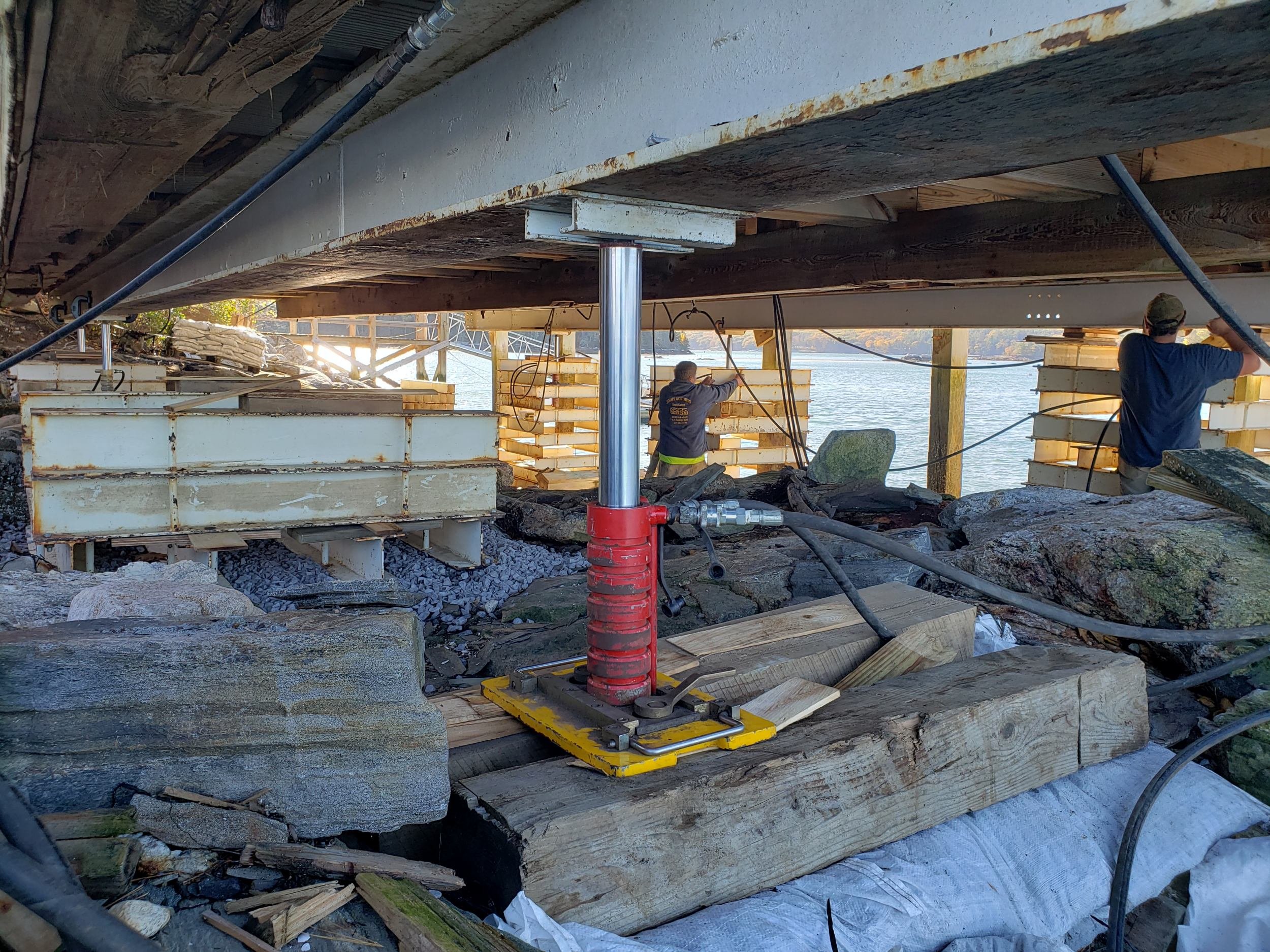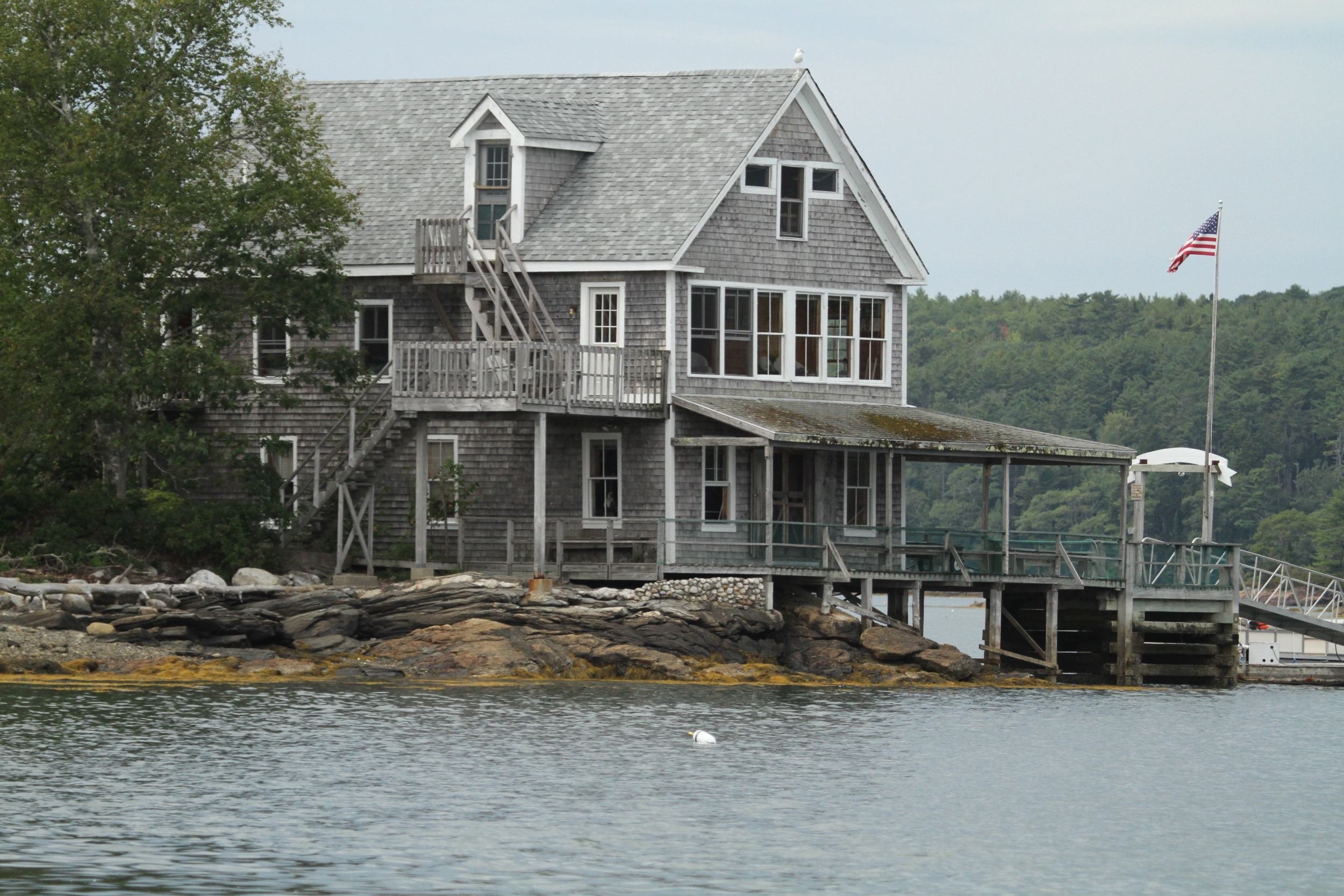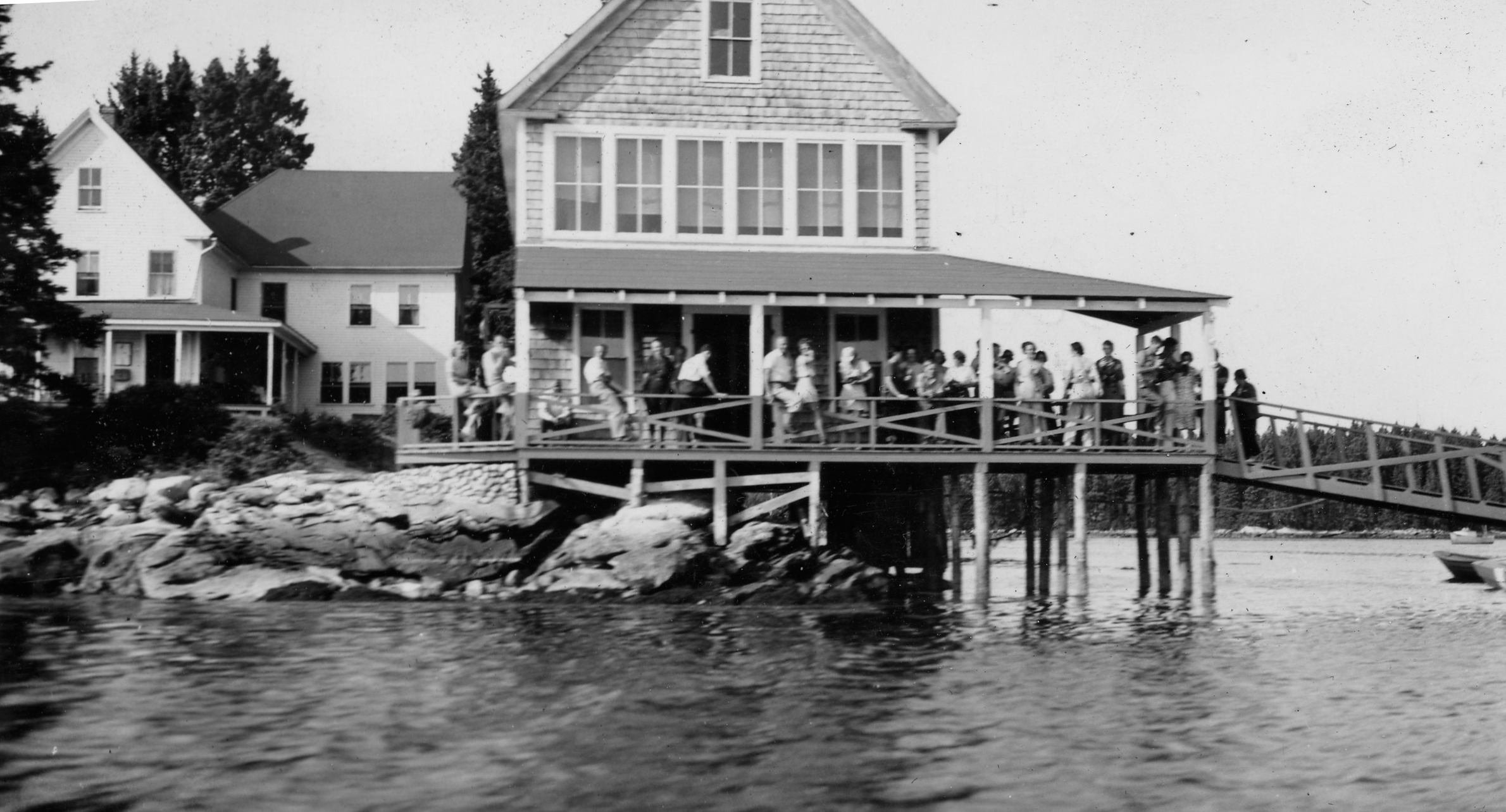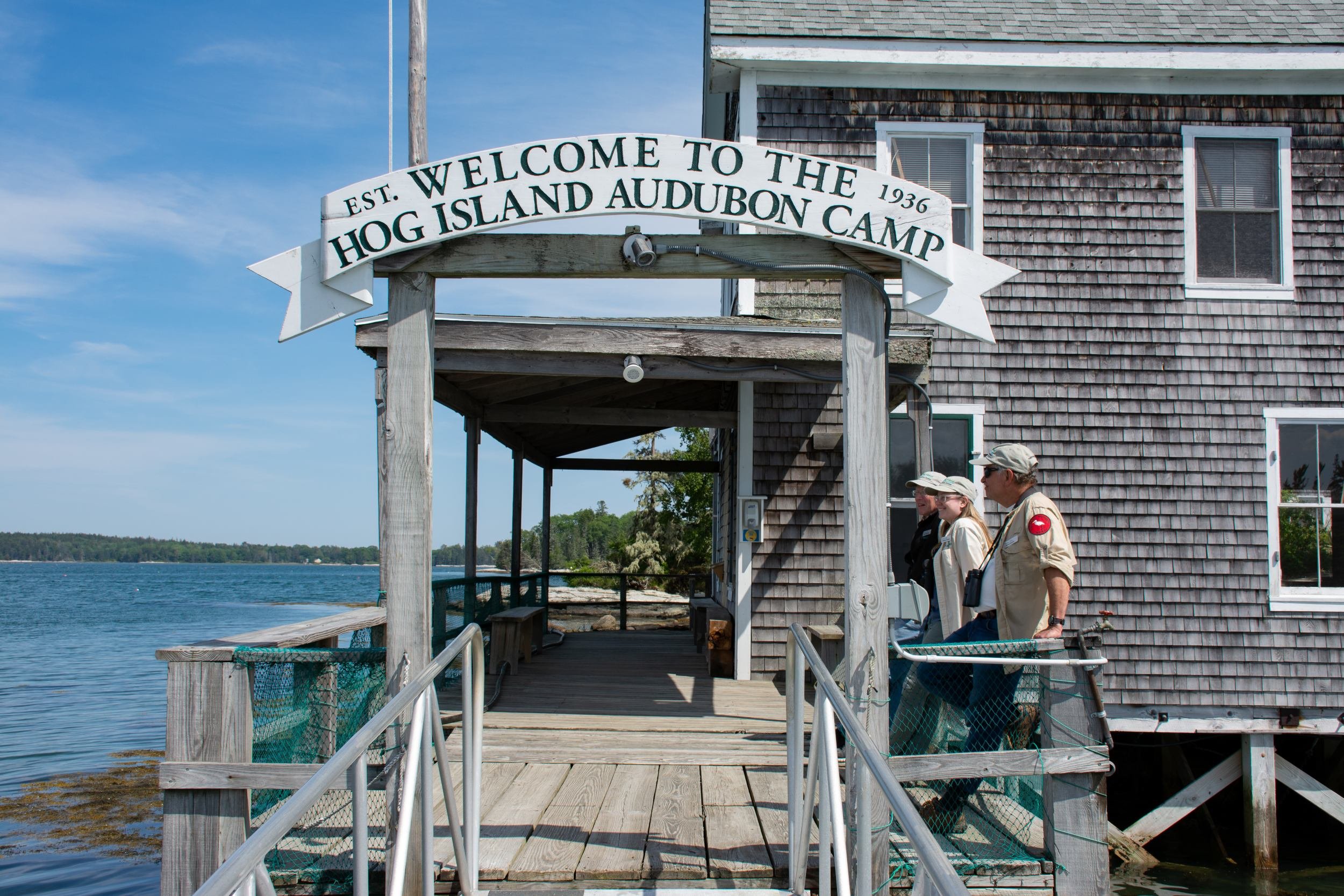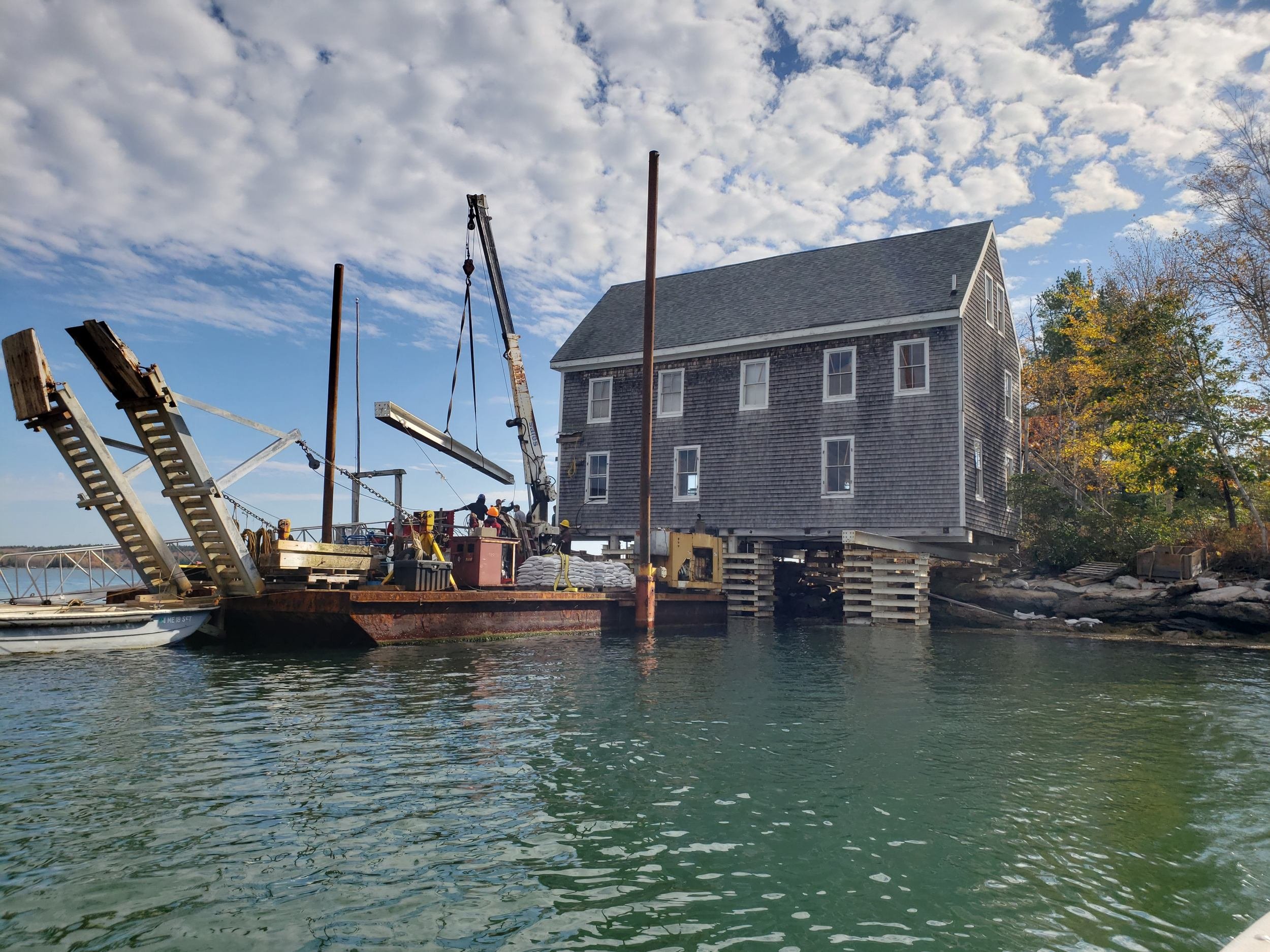Hog Island sits amidst the clam-rich waters of Muscongus Bay, once fished by the Abenaki. The island was subsequently logged by European settlers and its land repurposed for agricultural pursuits in the 17th century. The building that would later be named Queen Mary, after the great ocean liner, was believed to have been constructed by the 1880s as a ship chandlery. It later served as the primary meeting hall and casino for rusticators attracted by the island’s natural beauty, before falling into private hands.
In 1936, Millicent Todd Bingham donated the island to the National Audubon Society. It became Audubon’s first educational camp, offering learning opportunities for scientists, teachers, and conservationists from across the nation.
Project Puffin, a part of the National Audubon Society, assumed management of the camp as part of its larger research and conservation mission. An estimated 20,000 K-12 educators have had the opportunity to learn on the island and take their experience back to children across the country. The Queen Mary serves as the main base of operation, with the upper floors serving as a dormitory, while the lower floor is a laboratory and museum that houses the camp’s historic bird collection.
Facilities Manager, Eric Snyder, along with Friends of Hog Island, a nonprofit that supports the camp, shared growing concerns about the future of the Queen Mary. The building was listing upwards of seven inches and needed significant structural intervention. But even worse, increasing tides in the winter and rising sea levels due to climate change meant the lower floor was threatened by destructive flood waters. A seed grant from the Island Institute helped get things underway, but it was the overwhelming support from the Friends of Hog Island, from planning and fundraising to volunteering on site that made this intervention a reality.
The plans to stabilize and reinforce the Queen Mary were developed by Carmen Bombeke of Gartley & Dorsky. They first called for the installation of cables and turnbuckles that were slowly tightened over several years, realigning the building. The structure was then substantially reinforced using new posts in all the walls, new center beams, and timber frame bracing. To protect against lateral movement, additional paneling was added, which also required relocating the entrance door.
The project team, with significant guidance from the Maine Department of Environmental Protection, successfully campaigned to rezone the northern end of the island to allow for the building to be raised.
Work on the island, particularly over tidal water, presented the next challenge. Fortunately, Jewett Builders brought their expertise in jacking and marine operations to get the job done. Limited primarily to the hours around low tide, Jewett Builders placed temporary stone footings and assembled cribbing in preparation for the lift. Using steel beams and hydraulic jacks, crews raised the building four feet and installed new posts and main support beams. Crews excavated down to bedrock to ensure the new posts were on solid ground. After bracing and anchor points were installed, the building was lowered back one foot to its new height over the water. The adjacent docks, stairs, and surrounding infrastructure were rebuilt.
This $250,000 project extended the life of the Queen Mary, as well as her ability to educate future conservationists. The effort has also brought much-needed attention to the impacts of climate change on our valuable historic resources.
Project Participants
Chesterfield Associates
Friends of Hog Island
Fuller Marine Services
Gartley & Dorsky Engineering & Surveying
Island Institute
Jewett Builders
National Audubon Society
Photo Credits: National Audubon Society; Friends of Hog Island


